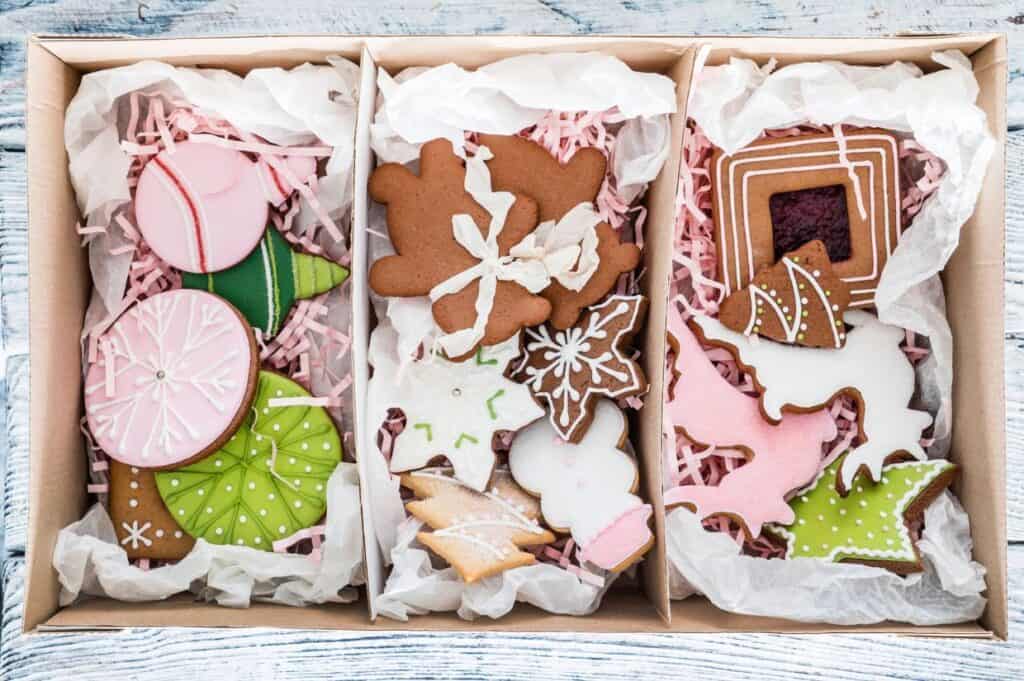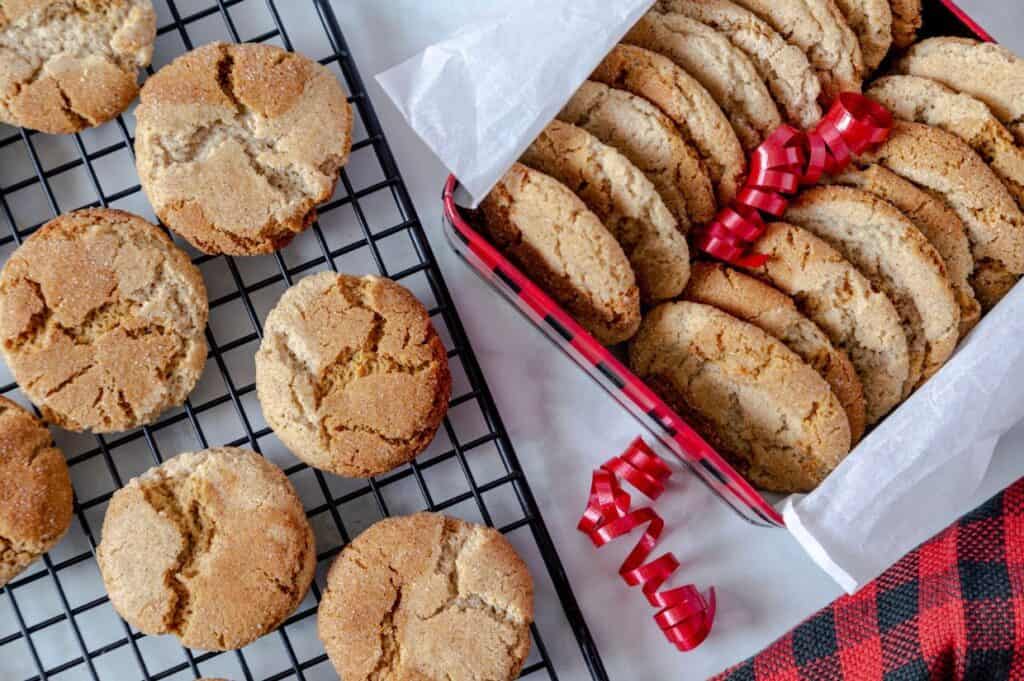A holiday cookie exchange is a great way to spend time with friends, family and neighbors plus come home with extra cookies for your own celebrations. Never been to one of these sweet, delicious and fun events? Read on for tips on hosting or attending your first cookie exchange.

A holiday cookie exchange defined
At its most basic, a holiday cookie exchange, usually held in December, is when participants swap cookies. You bring baked cookies that you made from scratch, not purchased from the local bakery or supermarket. In exchange, you go home with a variety of goodies that you didn’t have to bake yourself.
Each guest bakes a large batch of one type of cookie at a cookie exchange. A good number to go by would be a dozen cookies per guest. So, in a group of eight people, you would bring eight dozen — or 96 — cookies and go home with the same amount. However, numbers can vary based on how big or small your invited group is.

Michelle Price of Honest and Truly has been hosting an annual holiday cookie exchange for years. “The more people I have attending, the more cookies I ask people to bring,” she said. “I also ask them to bring an extra half dozen, or so, cookies for us to taste test.”
This idea of allowing participants to taste-test cookies first ensures everyone leaves with a variety they’ll genuinely enjoy. This allows them to sample each cookie at the swap, helping them to determine their favorites.
Mixed varieties of cookies
When organizing your cookie swap, you want to ensure you don’t end up with many of the same kinds of cookies. So ask the people you’ve invited to let you know ahead of time what variety they’ll be bringing. Or create a spreadsheet where people can add what kind of cookie they’ll be baking. As a shared document, everyone can see what other people will be baking and adjust their plans accordingly.
Having a couple of chocolate chip cookie varieties is probably okay. For instance, cheesecake-stuffed chocolate chip cookies are pretty unique. However, having eight dozen sugar cookies won’t be much fun for the participants. The spreadsheet can minimize the chances of this kind of duplication from happening.
Another important point to share with people you invite: Bring cookies that travel well. In other words, discourage them from baking and bringing something delicate that will break in transit.
For Shruthi Baskaran-Makanju of Urban Farmie, her go-to cookie for an exchange is a yellow cake mix cookie and an almond flour peanut butter cookie. She says they can withstand transport. Also, she’s made them so often that she can bake on autopilot. “This helps to keep the stress low for such a fun event,” she added.
Dietary restrictions

One of the challenges you may run into when planning a food-oriented event is when your guests have dietary restrictions. This could be someone living with food allergies who can’t have nuts or gluten. Or it could be someone who follows a religious way of eating, such as kosher or halal. Or your vegan friend who only wants vegan cookies made without animal products.
In these instances, it might feel impossible to please everyone you want to invite to your swap but don’t cancel the event. Try this instead: Make it clear that everyone should make the kind of cookie they would want to take home, whether it be low-carb cookies or gluten-free ones. And, if it’s not too much trouble for the host, they could bake additional cookies in smaller quantities to meet their guests’ dietary restrictions.
You can also bend the cookie exchange rules a bit and have additional store-bought cookies on hand for special diets. This allows everyone to go home with different kinds of cookies.
Cookie exchange organization

The host should arrange to have all of the cookies on a designated table or countertop. Ideally, participants have brought their cookies in a tin, on a tray or in a food storage container that they can open and place on the table for display. Feel free to have some fun with these containers. For instance, Shruthi Baskaran-Makanju likes to choose a festive tin or ribbon for her cookie contributions.
It’s also a nice touch if each baker has made a label or recipe card for the type of cookie they brought. This helps if the variety isn’t obvious. For instance, your exchange might include a lemon cookie that isn’t yellow or someone used peanut butter so people with nut allergies can steer clear.
If you want to encourage people to taste-test cookies, as Michelle Price does with her annual cookie exchange, then the host should provide a small plate for samples. And if you plan on voting for your favorite cookies at the swap, then you’ll want to have a voting sheet available, too.
Finally, all participants should bring enough containers with them to take home the dozens of cookies that they’ll be getting at the swap. This is something to communicate on your invitation. However, a relaxed host is a prepared host, so have extra containers on hand for people who might have forgotten. Thrift stores are a great place to pick up inexpensive cookie tins if you choose to go that route.
Or do what Michelle Price does: “I bulk order bakery boxes so that people have a way to package up the cookies as they select them,” she said. “Also, I have a backup of extra trays to hold the cookies for those who forgot to bring one to put out with their cookies.”
Final thoughts on a fully baked cookie exchange
Plan your cookie exchange one to two weeks before Christmas. This timing allows participants to use the cookies for holiday gatherings or gift-giving. Of course, with an exchange earlier in December, people can freeze cookies and thaw them later in the month to serve them for the holiday celebrations or nibble on in the New Year. Either way, with these tips in mind, you should have a great time hosting or participating in your first cookie exchange.
Writer Leah Ingram hopes to host her first cookie exchange this holiday season. She is thankful to have a variety of cookie recipes she can tap into on her blog Bagels and Lasagna.